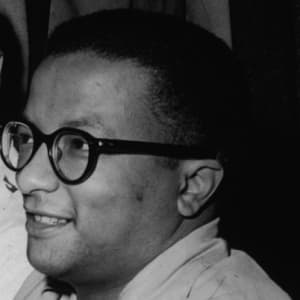
Sir Philip Sidney
Elizabethan courtier Philip Sidney served as a Protestant political liaison for Queen Elizabeth I, but became famous for his poetry and death as a soldier during the English Renaissance.
Synopsis
Philip Sidney was born on November 30, 1554, at his family's state at Penshurst in Kent, England. From his youth, Sidney was respected for his high-minded intelligence, and frequently provided diplomatic service to Queen Elizabeth I as a Protestant political liaison. His opposition to her French marriage earned her displeasure, however, and he later left court and began writing his poetical works. In 1586, Sidney accompanied his uncle, Robert Dudley, Earl of Leicester, to the Lowlands to defend the Protestants and was wounded in battle, dying a few weeks later, on October 17. Considered a national hero, Sidney was given a lavish funeral. When his poetry was subsequently published, he became lauded as one of the great Elizabethan writers.
Early Life
Philip Sidney was born on November 30, 1554, at the family estate at Penshurst in Kent, England. His father, Sir Henry Sidney, had been a close personal adviser to Edward VI (Henry VIII's son), but when the young king died, he managed to stay in favor with the Catholic Queen Mary, naming his first son after her husband, Philip II of Spain, who also agreed to be the child's godfather. Philip's mother was Lady Mary Dudley, sister to Robert Dudley, Earl of Leicester, who was for his lifetime a close confidant and personal favorite of Queen Elizabeth I.
Three more children were born to the couple, including Mary Sidney (later known as Countess of Pembroke), who adored her elder brother.
Young Philip began his education at the Shrewsbury School, where he proved an apt and eager student and forged a lifelong friendship with Fulke Greville (later Baron Brooke), who would write a laudatory epitaph and biography of his bosom buddy. At the age of 13, Sidney transferred to the University of Oxford's Christ Church College.
Diplomat Courtier and Poet
Three years later, Sidney was sent to the Continent to further his education, and in 1572, he was first enlisted in diplomatic service, functioning as an envoy to King Charles IX of France. While in Paris, Sidney witnessed the St. Bartholomew's Day Massacre of Protestant Huguenots by Catholics. He also met Hubert Languet, a politically influential humanist who became a lifelong friend and adviser, in Europe.
Sidney, like his father before him, provided frequent diplomatic service in Europe for Queen Elizabeth. Among his actions, he formed an exploratory alliance with Protestant German princes, and visited his father in Ireland when Henry Sidney was lord deputy there.
Courtier and Poet
Sidney joined the fad of Elizabethan courtier poets, penning a play, The Lady of May, that was performed at his uncle, Earl of Leicester's royal entertainment for the queen in 1578. The production included political undertones about Elizabeth's consideration of a Catholic marriage alliance with France.
In 1579, a heated fracas known as the "tennis-court quarrel" between Sidney and Edward de Vere, Earl of Oxford, was ostensibly about rank and the rights of play, but beneath the facade were tensions between factions for and against the queen's marriage. (The two had also been rivals for the hand of Anne Cecil—William Cecil, Baron Burghley's daughter—and Oxford had married her.)
The queen sternly admonished Sidney for his behavior, and he subsequently left court for his sister Mary's estate at Wilton, where he took up writing a long narrative poem, The Arcadia, for her entertainment. During this time, he also wrote a sonnet cycle, Astrophil and Stella, and his critical treatise, An Apologie for Poetry (also known as A Defence of Poesy). Sidney's compatriots in poetry included Edmund Spenser, Edward Dyer, Samuel Daniel and Gabriel Harvey.
Sidney is lampooned in several Shakespeare plays, including the character Master Slender in The Merry Wives of Windsor, referencing his marriage negotiations with Anne Cecil, and Sir Andrew Aguecheek in Twelfth Night (Sidney's face was scarred from a bout with smallpox and his birthday is St. Andrew's Day).
Death & Legacy
Philip Sidney died at Arnhem in the Netherlands on October 17, 1586, after a gunshot that he'd sustained in a battle at Zutphen against the Spanish Catholic forces turned gangrenous. According to legend, in his pained state, Sidney eschewed a cup of water in favor of another wounded soldier, saying, "Thy necessity is yet greater than mine," underscoring a carefully cultivated persona of nobility. His lavish state funeral, which almost bankrupted his father-in-law, Sir Francis Walsingham, the queen's spymaster, was delayed until February of the following year—just eight days after the beheading of Mary Queen of Scots, drawing attention away from that political powder keg. He is buried at St. Paul's Cathedral in London.
Forty-two years after Sidney's death, schoolfellow Fulke Greville had engraved on his tombstone: Servant to Queene Elizabeth/ Conceller to King James/ and Frend to Sir Philip Sidney. His biography of Sidney was published in 1652.



